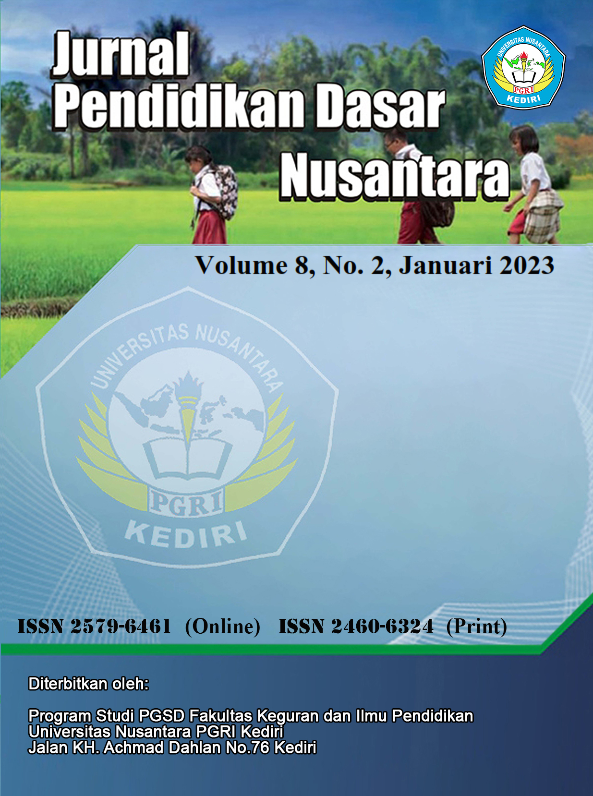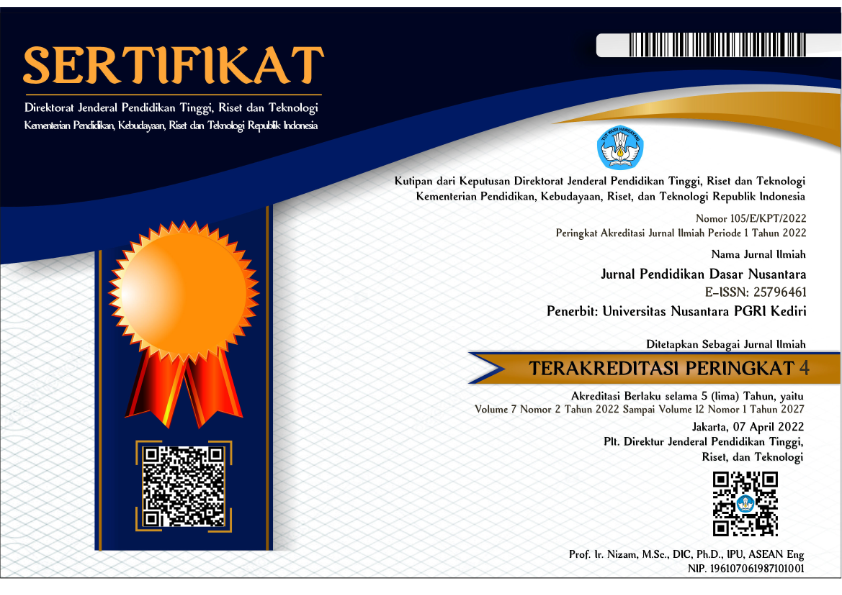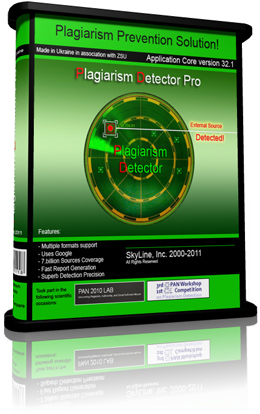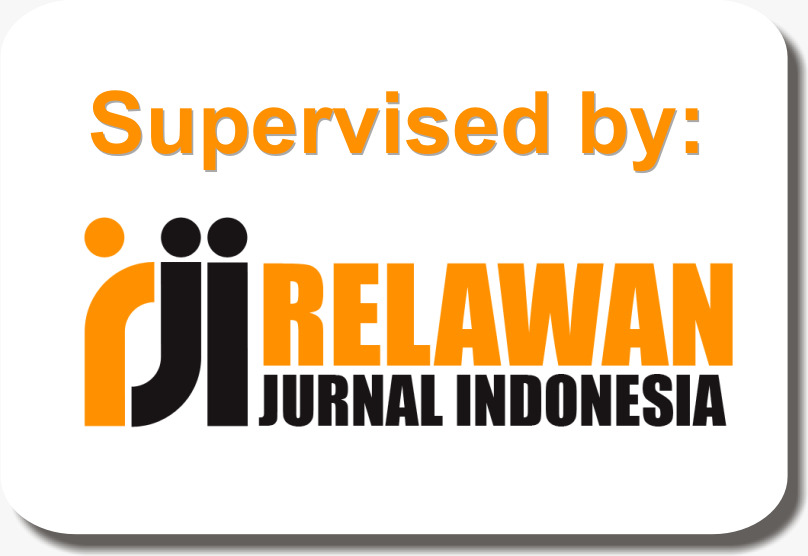The development of iv grade thematic teaching materials based on local culture of east sumba
DOI:
https://doi.org/10.29407/jpdn.v8i2.18404Keywords:
Teaching Materials, local culture, social studies (IPS)Abstract
This research was conducted based on the situation in the Social Studies (IPS) learning process which was not effective and efficient because problems were often encountered, that is verbalism in learning because teachers interpreted teaching materials as mere tools and availability of teaching materials was not relevant to the material being taught. This study aims to develop teaching materials based on the local culture of East Sumba that are relevant to Social Studies material in class IV that are valid, practical, and effective. This type of research used development research with the ADDIE Model, which consists of 5 stages, that are Analysis, Design, Development, Implementation, and Evaluation. Collecting research data using questionnaires and tests. The research subjects for class IV SDK Santo Yosep 2 were 25 people. Data collected consisted of expert validation data, teacher and student response questionnaire data, as well as test result data. The results showed that development of teaching materials for IPS class IV SDK Santo Yosep 2 had very good qualifications with an achievement level of 90.41%. The achievement of this quality is obtained from the calculation of average media validity level of 90.83% with very valid qualifications, the practicality level of media is 96.40% with very practical qualifications, and the effectiveness level of media is 84% with very high/effective qualifications. So it can be concluded that diorama media developed is valid, practical, and effective.
Downloads
References
Akbar, S. 2013. Instrumen Perangkat Pembelajaran. Bandung: PT Remaja Rosdakarya.
Branch, R. 2009. Instructional Design The ADDIE Approach. USA: University of Georgia.
Divan, S. (2018). Pengembangan Bahan Ajar Tematik Berbasis Budaya Lokal untuk Siswa Kelas IV Sekolah Dasar. Jurnal Pendidikan; Jurnal Kajian Teori & Praktik Pendidikan. 3 (1). 101 – 114.
Faisal, E.E & Sulkipani. (2016). Pengembangan Bahan Ajar Berbasis Muatan Lokal pada Mata Kuliah Pendidikan Kewarganegaraan. Jurnal Civics. 13 (2). 113 -126.
Laksana, D.L.B., Kurniawan, P.A.W., Niftalia, I. (2016). Pengembangan Bahan Ajar Tematik SD Kelas IV Berbasis Kearifan Lokal Masyarakat Ngada. Jurnal Ilmiah Pendidikan Citra Bakti. 3(1). 1-9.
Latifah, N. (2018). Pengembangan Bahan Ajar Berbasis Budaya Lokal Subtema Indahnya Keberagaman Budaya Negeriku di Kelas IV Sekolah Dasar. Program Studi Pendidikan Guru Sekolah Dasar, Universitas Jambi.
Lawe, Y.U., Dopo, T., Kaka, P.W. (2019). Pengembangan Bahan Ajar Elektronik Berbasis Budaya Lokal Ngada untuk Pembelajaran Tematik Siswa Sekolah Dasar. Jurnal Ilmiah Pendidikan Citra Bakti. 6(2). 134 – 145.
Lumban Gaol, R. & Simarmarta, E.J. (2019). Efektivitas Bahan Ajar Tematik Sekolah Dasar Berbasis Budaya Lokal Melalui Penerapan Pembelajaran CTL terhadap Aktivitas Belajar. Jurnal Guru Kita. 3(4). 342 – 348.
Mardhiyah, et.al (2021). Pentingnya Keterampilan Belajar di Abad 21 sebagai Tuntutan dalam Pengembangan Sumber Daya Manusia. Lectura Jurnal Pendidikan. 12(1). 29-40.
Pribadi, Benny A. 2016. Desain dan Pengembangan Program Pelatihan Berbasis Kompetensi Implementasi Model ADDIE. Jakarta: Prenada Media Group.
Riduwan. 2003. Dasar-Dasar Statistika. Bandung: Alfabeta.
Tinja, Y., Towaf, S.M., Hariyono. (2107). Pengembangan Bahan Ajar Tematik Berbasis Kearifan Lokal Sebagai Upaya Melestarikan Nilai Budaya Pada Siswa Sekolah Dasar. Jurnal Pendidikan: Teori, Penelitian dan Pengembangan. 2 (9). 1257 – 1261.
Wijiningsih, N., Wahjoedi, Sumarmi. (2017). Pengembangan Bahan Ajar Tematik Berbasis Budaya Lokal. Jurnal Pendidikan; Teori, Penelitian dan Pengembangan. 2 (8). 1030-1036.
Zinnurain & Muzanni, A. (2017). Pengembangan Buku Ajar Berbasis Kearifan Lokal pada Siswa Kelas V Sekolah Dasar. Prosiding Seminar Nasional Pendidik dan Pengembang Pendidikan Indonesia dengan Tema “Membangun Generasi Berkarakter Melalui Pembelajaran Inovatif”. Aula Handayani IKIP Mataram 14 Oktober 2017. ISSN 2598-1978. 639 – 645
Downloads
Published
Issue
Section
License
Authors who publish with this journal agree to the following terms:
- Copyright on any article is retained by the author(s).
- The author grants the journal, the right of first publication with the work simultaneously licensed under a Creative Commons Attribution License that allows others to share the work with an acknowledgment of the work’s authorship and initial publication in this journal.
- Authors are able to enter into separate, additional contractual arrangements for the non-exclusive distribution of the journal’s published version of the work (e.g., post it to an institutional repository or publish it in a book), with an acknowledgment of its initial publication in this journal.
- Authors are permitted and encouraged to post their work online (e.g., in institutional repositories or on their website) prior to and during the submission process, as it can lead to productive exchanges, as well as earlier and greater citation of published work.
- The article and any associated published material is distributed under the Creative Commons Attribution-ShareAlike 4.0 International License

































